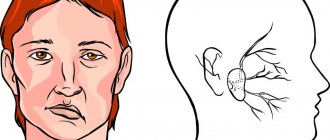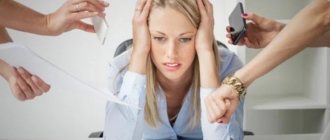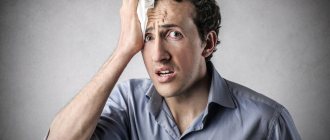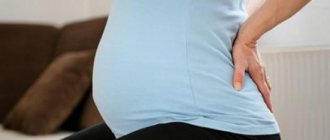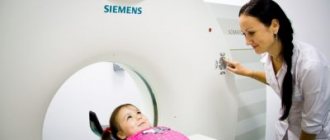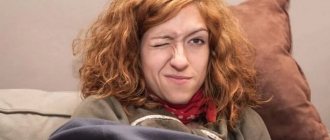Stroke is a disease manifested by focal and cerebral symptoms that persist for more than 24 hours. At the Yusupov Hospital, patients with ischemic stroke are treated by professors and doctors of the highest category. Their knowledge and experience allows us to provide high-level specialized medical care to patients who are admitted to the neurology clinic in serious condition.
The Yusupov Hospital has all the conditions for comfortable treatment of patients:
- superior rooms;
- modern efficient equipment that allows you to effectively support vital functions;
- qualified personnel;
- individual approach to the treatment of each patient.
Depending on the cause of the disease, ischemic and hemorrhagic strokes are distinguished. The cause of ischemic stroke is an acute disturbance of blood flow through the cerebral arteries due to their blockage by a thrombus, embolus, or vasospasm. Hemorrhagic stroke develops when a cerebral artery ruptures and blood escapes from its lumen.
Etiopathogenesis
The main mechanism for the development of paralysis is stroke - damage to the artery with blood escaping beyond the vascular bed. As a result, a hematoma is formed, which gradually grows and compresses the brain tissue. Vital neurons die, loss of function is noted, control of skeletal and smooth muscles decreases, and sensitivity disappears.
This condition is predisposed to:
- Eating disorders – the main role is played by a lack of calcium in the diet, which strengthens the walls of the arteries. In these cases, cardiologists repeat “where it’s thin, that’s where it breaks.” Weakened brain vessels that are prone to damage can cause a stroke;
- Hypertension – the situation is aggravated by increased blood pressure, which can damage weakened blood vessels. In older people, there is a lack of calcium, which can cause artery rupture;
- Compounded heredity - according to recent studies, there is a predisposition to vascular diseases, especially hypertension and strokes. The mechanism has not been fully studied; insufficiency of the neurohumoral mechanism and weakness of the vascular wall are assumed;
- Obesity - this condition is accompanied by a lack of minerals, an increase in blood pressure, which increases the likelihood of developing a stroke with subsequent paralysis;
- Cardiovascular diseases - valve malformations, heart failure, atherosclerosis and thrombosis predispose to cerebral hemorrhage;
- Endocrine diseases - diabetes comes first, leading to hypertension and hemorrhages. Sometimes the causes are hypothyroidism, pathologies of the adrenal cortex;
- Bad habits - nicotine weakens the walls of arteries and increases cholesterol levels in the blood. Natural alcohol in minimal dosages is useful, but an excess of surrogate or drunkenness often ends in stroke and paralysis.
The listed factors can provoke both left and right paralysis. According to statistics, the latter option is observed more often, which increases the patient’s chances of survival due to timely diagnosis.
Extensive ischemic stroke of the right hemisphere: causes and clinical picture
The etiology of cerebrovascular accident according to the type of cessation of blood flow through the vessel is as follows:
- atherosclerosis;
- embolism - a blood clot from the heart (with arrhythmias) blocks the lumen of the artery;
- the presence of concomitant pathologies that negatively affect the vascular wall: diabetes mellitus, metabolic syndrome, alcohol dependence, tobacco smoking;
- a sharp drop in blood pressure;
- coagulation defects.
The clinical picture of extensive ischemic stroke of the right hemisphere is determined by the functions for which this side is responsible. The right hemisphere carries out the perception of information from the senses, analyzers, spatial orientation and speech ability.
If the blood supply to this area is disrupted, neurologists record the following sudden signs:
- weakness up to complete paralysis in the left limbs;
- smoothness of the right nasolabial fold;
- memory disorders;
- only in left-handed people, after a major ischemic stroke in the right hemisphere, speech impairment is diagnosed;
- awareness of parts of one’s own body is impaired;
- patients have difficulty naming certain objects: knowing their purpose, they cannot say the name;
- loss of left visual fields;
- loss of ability to concentrate, behavioral disorders, disturbances in the emotional-volitional area.
Types of paralysis
After a stroke, the doctor’s main task is to determine the presence of paralysis and its type. All hemorrhages on the right and left sides are divided into two categories:
- Peripheral paralysis is the most favorable variant of the disease, characterized by partial loss of function. The patient's motor neurons are damaged, which leads to loss of sensitivity and a decrease in complex and purposeful movements.
- Central paralysis - indicates hemorrhage in the motor areas, as a result of which the right arm and leg are completely amputated. Such patients are unable to care for themselves and there is a high risk of disability.
Signs of right-sided paralysis
If there was a stroke in the left hemisphere, the patient’s right side of the body is affected, the muscles of the limbs are paralyzed and there is no speech. These are the main differences between this condition. Patients also develop the following symptoms:
- Common symptoms are headache, nausea, vomiting and weakness. They appear in the first few days and are considered the body’s response to damage to brain neurons;
- Loss of movement - with central paralysis, the right limbs are flaccid, there is no sensitivity, the patient cannot perform any actions with the right arm and leg. If peripheral neurons are affected, the patient experiences tremor, and some movements are difficult on the same side;
- Reduced memory – there are difficulties in remembering sentences; in severe cases, it is difficult for a person to repeat individual words;
- Paresis of the right facial nerve - this branch innervates all facial muscles on its side. In the absence of control, the muscles relax, the patient’s corner of the mouth and lower eyelid “hang”;
- Spontaneous contractions of some skeletal muscles on the right - usually the arm is bent at the elbow joint, the leg is straightened, and inward rotation of the foot is noted.
The listed symptoms are observed a few minutes after hemorrhage. As health deteriorates, the patient develops stress, accompanied by depression and difficulties in communication.
Paralysis of the right side of the body after a stroke
The symptoms of the disease are pronounced; they are easy to recognize and seek help in time. If you notice the following signs:
- loss of speech;
- lack of memory;
- inability to read and write;
- movement coordination is not controlled;
- problems with logical thinking.
Contact your doctor immediately. Timely assistance is the key to the rapid recovery of a patient diagnosed with paralysis of the right (left) side of the body after a stroke. Statistics show that most patients, after proper therapy and rehabilitation, quickly return to a full life.
Consequences of right-sided paralysis
In severe cases, right-sided lesions lead to irreversible complications that develop as a result of massive hemorrhage or violation of treatment rules. We list the most common conditions:
- paralysis of both arms and legs;
- lifelong speech dysfunction;
- disturbance of thinking, memorization, social behavior;
- the appearance of bedsores;
- exacerbation of chronic diseases against the background of reduced physical activity;
- enuresis and fecal continence disorders.
The main task of the doctor is to create conditions that ensure full recovery after a stroke on the right side, which will minimize the development of complications.
Extensive ischemic stroke of the left hemisphere
The causes of development are similar to ischemic lesions of the brain in other locations. With this disease, the symptoms that come to the fore are:
- sensory and motor abnormalities on the contralateral (right) side;
- loss of ability to speak;
- loss of logical thinking;
- lethargy and emotional disturbances.
All types of ischemic strokes (extensive, left hemisphere or right) are characterized by the appearance of general symptoms associated with increased intracranial pressure. This is the development of a sharp persistent headache, weakness, loss of consciousness, vomiting, nausea, dizziness.
In the treatment of pathologies of cerebral circulation, the time period during which the correct diagnosis is made is very important. Doctors at our center are proficient in examining patients using modern equipment. We widely implement treatment in accordance with international standards into our daily practice.
Drug therapy
If the right side is paralyzed due to a stroke, you should start with drug therapy. The drugs of choice are:
- Antiplatelet agents and anticoagulants (Curantil, Warfarin) - thin the blood and improve its passage through the arteries. The use of these drugs is effective for atherosclerosis, thrombosis or vascular spasms;
- Diuretics (Hypothiazide, Veroshpiron) – remove excess fluid, prevent cerebral edema and hypertensive crisis;
- Antispasmodics (Papaverine, Vincamine) - relax blood vessels and improve blood circulation;
- Agnioprotectors (Parmidin, Alprostan) – have a beneficial effect on the arteries, preventing the development of spasms;
- Nootropics (Piracetam, Actovegin) - improve brain function. They are taken for a long time, including the rehabilitation period.
The doctor prescribes medications based on the patient’s condition. In severe cases, a complete list is written out, and daily blood pressure monitoring is carried out.
Diet
Diet is necessary to improve blood circulation and maintain immune resistance. A well-chosen table should contain everything necessary for the regeneration of damaged tissues, but not overload the weakened body.
The basic rules for the diet are as follows:
- exclusion of smoked and fatty foods;
- meat can only be eaten with the approval of a doctor, in small portions and pureed. The menu includes only lean varieties;
- enrich your diet with vegetables and fruits;
- exclude coffee, strong tea, soda and alcohol;
- food should be fractional, in small portions.
For seriously ill patients, the menu is prepared by a nutritionist, taking into account the state of the body and the necessary energy costs.
Massage
This method is aimed at preventing bedsores and is used from the first days of paralysis. The right side of the body is warmed up, after which blood circulation and tissue trophism are improved, and mobility in the joints is restored.
To eliminate the effects of paralysis, a standard warm-up includes:
- stroking - from the periphery, along the blood flow;
- rubbing – carried out more intensively, similar to the previous method;
- vibration movements – in the area of soft tissues;
- The procedure ends with stroking.
To prevent new bedsores from arising, it is recommended to massage daily, regularly change the patient’s position and rub the skin with alcohol (if there are no wounds).
Visit to a speech therapist
To restore speech, daily training is required, which will be supervised by a specialist. The patient is given homework, including systematic exercises.
The objectives of such therapy are:
- restoration of oral speech;
- rehabilitation of writing;
- normalization of speech memory.
It is very important that a person not only learns to speak, but also understands the speech of others. Experts recommend that patients not isolate themselves, but constantly contact people.
First aid for a stroke before the ambulance arrives
- Call an ambulance, and you should clearly explain everything that happened to the person. The patient requires the help of a neurologist, so the team that should come for the patient depends on how the dispatcher understands what happened to the person.
- The victim's head should be raised 30 degrees from the level of the body; you can place clothes or a blanket under the head.
- It is necessary to ensure the flow of fresh air into the room and loosen clothing that restricts breathing - belts, belts, collars. If vomiting occurs, place the patient on his side, after which you should help him clean his mouth or rinse it, if he is able to do so.
- Measure blood pressure and record the result.
The speed of providing first aid for a stroke determines not just the duration and complexity of further rehabilitation of the victim, but even a person’s life. It is very important to recognize the signs of a stroke as early as possible and provide adequate pre-hospital and then medical care in a hospital setting - medication or surgery.
